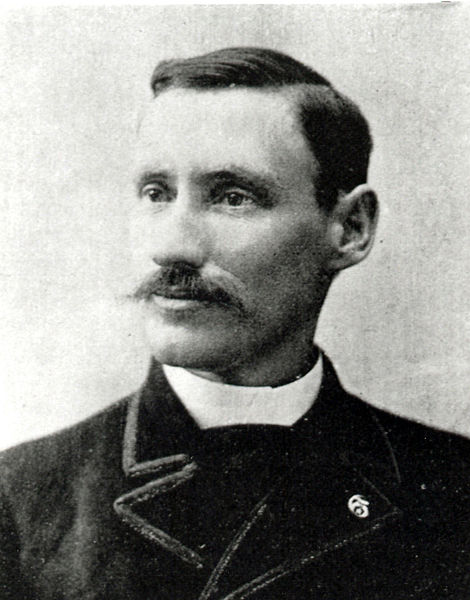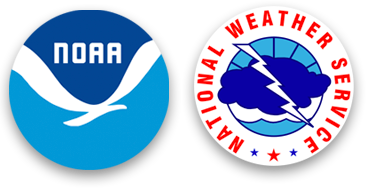Isaac Monroe Cline: The Cyclone Pioneer - National Weather Service Heritage

Isaac Monroe Cline: The Cyclone Pioneer
By Emily Senesac (emily.senesac@noaa.gov)On September 7, 1900, the tell-tale signs of an impending hurricane were not present over or near the city of Galveston, Texas. However, after watching increased size and frequency of sea swells, Isaac Monroe Cline, the chief meteorologist at the Galveston Weather Bureau office, was convinced that danger was on the horizon. Listening to his instincts, Cline decided to raise the hurricane flags atop the Galveston Weather Bureau office without prior permission, breaching Weather Bureau protocol in the hope that life and property could be saved. Unfortunately, his actions were not enough to prevent the mass destruction and loss of life that occurred on September 8, 1900 as a maelstrom unlike any other ripped through the island city, leaving more than 6,000 deceased in its wake. Fighting through the rapid flooding, blinding rain, and powerful winds created by the Hurricane of 1900, Cline and his family struggled to survive as their town was destroyed before their very eyes. While Cline and his three children managed to make it out alive, Cline’s pregnant wife Cora succumbed to the hurricane. This devastating storm and the loss of his beloved wife would forever change Cline’s scientific focus, sparking an interest in cyclone forecasting and observation. However, before the storm, who was Isaac Monroe Cline?
Born in 1861, Cline was an extremely educated and inquisitive child and adolescent, with an affinity for learning that would eventually lead him to a career as one of the most accomplished and respected meteorologists of his time. After plumbing the depths of higher education at Hiwassee College, where he studied languages, mathematics, and science, one query still remained unanswered: what would he do next?
His answer came in 1882. A new weather service was launched under the Army Signal Service in 1870 and it was decided that this newfound meteorological service would be staffed with college-trained officers. Twelve years after its establishment, Cline became one of those staffing officers and was briefly stationed at Fort Myers in Virginia to undergo training. Soon after, Cline was sent to Little Rock, Arkansas where he served as an assistant weather observer. At his post, he took frequent daily observations, transmitted information to the Washington, DC Weather Bureau Headquarters, and prepared bulletins for commercial use. Still, he longed for more, which led him to marriage, a family, and relocation to Galveston, Texas by 1889.
Upon moving to this island city off the coast of Texas, Cline was tasked with establishing a new weather station and organizing the Weather Bureau’s Texas section. From the 1890s until the turn of the century, Cline contributed much to the field of meteorology and the expansion of the Weather Bureau. One of his most noteworthy accomplishments was the production and issuance of the nation’s first 24- and 36-hour temperature forecasts and freeze warnings, giving farmers advance notice of incoming temperature changes. Additionally, Cline developed and used precipitation and stream-flow data to provide downstream flood warnings, as well as arranged for an exchange of weather observations between the US Weather Bureau and the Mexican Weather Service. These major milestones in collaboration and weather observation had a massive effect on the Texas region in the years leading up to the storm, an unprecedented meteorological disaster.
On September 8, the hurricane unlike any other ripped through the city, causing mass flooding, destruction, and loss of life. Cline and his brother continued to report observations back to headquarters until the last telegraph line went down.
As a result of this fierce storm, Cline found a new research topic: cyclone forecasting. In 1901, one year after the devastating hurricane, Cline moved with his children to New Orleans. Here, he became the forecaster-in-charge of the new Gulf District, an ideal location to begin conducting his cyclone research. Between 1900 and 1924, Cline meticulously charted meteorological data observed during 16 different cyclones that affected his region. Prior to Cline’s observational procedures, cyclone forecasting was based primarily on broad synoptic data that often weren’t supported by observation data. In contrast, Cline’s method determined the probable path of a cyclone by observing minimum air pressure and wind shifts recorded at stations both ahead of and beside a cyclone. Using this information, Cline would then plot the track of an impending cyclone on a map, including data that concerned hourly positions, wind/cloud direction, wind speeds, and precipitation. In 1926, Cline wrote a book, Tropical Cyclones, detailing his findings and research results. This endeavor is widely recognized by the meteorological community as a landmark achievement in weather research.
At the same time, Cline continued to study and fine-tune his flood forecasting efforts. Often times, he would release flood forecasts for his region that were based entirely on his own calculations, using precipitation and stream-flow data. This practice was in direct violation of policy, so Cline was frequently at odds with and criticized by Washington forecasters. However, those criticisms went away as the accuracy of his predictions became more and more clear. Cline persisted with his forecasting and observations until his retirement in 1935.
Like so many other pioneers that lived before and after him, Isaac Monroe Cline’s work was instrumental in laying the foundation for the scientific and technological advances of the National Weather Service. In fact, his achievements inspired the creation of the Isaac M. Cline Award, which recognizes individuals and teams who have made significant contributions in support of the National Weather Service.
Additional Reading:
